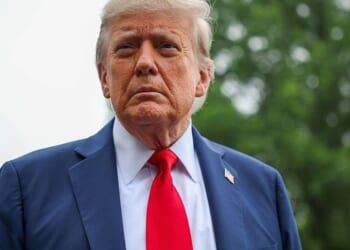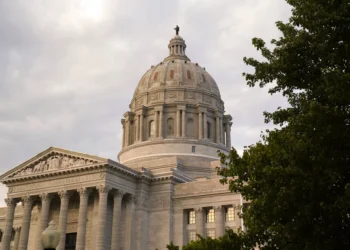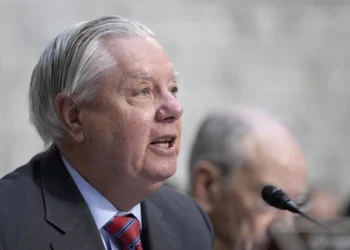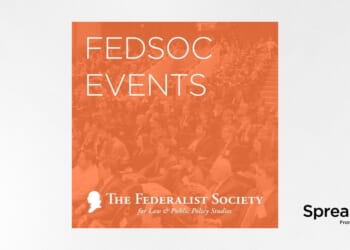Foreign students have flooded American college and university campuses for years.
At one time, they came to learn about America’s system of government and founding documents, to acquire skills and knowledge not available to them in their home countries, or to gain a deeper understanding of Western culture.
And their numbers are steady. Open Doors Data, sponsored by the U.S. Department of State, reports that nearly 900,000 international students came to America in the 2023-2024 academic year, just slightly higher than each of the previous eight years and making up about 5% of the total student population.
However, in recent years, the presence of international students has become more controversial — for good reason.
In June, charges were filed against “two Chinese researchers accused of trying to smuggle a fungus into the United States, bringing the case as the government pushes to keep more Chinese students out of the country,” The New York Times reported. “The students, Yunqing Jian, 33, and Zunyong Liu, 34, were in a romantic relationship last July, when U.S. authorities say Mr. Liu arrived in the country carrying small bags of the fungus Fusarium graminearum, which causes a disease that can cripple wheat, barley, maize and rice.”
Adding to the controversy more broadly, thousands of international students have engaged in violent and disruptive protests on American campuses, sparking a response by the Trump administration to revoke university funding and initiate a new process to monitor social media accounts of foreign students. As the BBC details, “Applicants for the M visas, used for vocational students, and the J visas, used by exchange students, will also be impacted, a State Department spokesperson said. Those who keep their social media accounts private may be deemed as trying to hide their activity, the department added.”
Certainly, these are exceptions to the rule. However, the sheer number of foreign students raises concerns about the vetting process and whether these students will offer any value to American society once they earn their degrees and return home.
But there’s a deeper question: What do colleges and universities gain from all these international students enrolling in their programs?
“Foreign interests lavish our top universities with gifts,” Fox News reports. “In just the last five years, the Harvard Crimson reports $151 million from foreign governments and over a billion from foreign donors flowed to Cambridge. For hundreds of years, Harvard has educated the nation’s great industrialists, financiers, and business magnates, kept the coffers of its endowment, still at a robust $52 billion, overflowing. But the blue-blood spigot is running dry.”
Of course, it’s all about the money.
NAFSA, a nonprofit organization of international educators, states that more than one million international students contributed nearly $43 billion to the U.S. economy during the 2023-2024 academic year in housing and tuition. These students not only fill dorm rooms and lecture halls, but they also come ready and willing to spend money on and off campus. The Conversation conveys, “The average international student brings a wallet stuffed with about $29,000 to spend on everything from tuition to pizza. As these students rent apartments, buy books, and order DoorDash delivery to fuel all-nighters, they’re pumping money into the local community.”
There is no doubt that many international students bring experiences, perspectives, and talent to our top colleges and universities, but prioritizing them over American students simply because they have the financial means may not be in our best interests. As veteran political analyst Jim Geraghty notes, “Public universities get a significant chunk of their funding from state governments, and if you’re going to get taxpayer money, it is fair to ask that you prioritize the education of American students.” Geraghty adds, “Yes, foreign students are often paying more — one of the reasons colleges and universities love them — but they’re also taking up a spot in a classroom that otherwise could have gone to a qualified student who is an American citizen. We are giving a finite resource — access to our best professors, laboratories, libraries, etc. — to wealthy foreign students at the expense of an American student who probably will need loans and scholarships.”
While international students are a financial benefit to many colleges, a significant amount of money funneled into schools as gifts is not being monitored as required by law.
Americans for Public Trust comments, “While the sheer scale of these payments is both staggering and alarming, even more concerning is how ineffective current safeguards have been at ensuring transparency and documentation of this influx of foreign cash. These protections are, at best, lax and lightly enforced. At worst, they can easily be by-passed by bad actors, allowing vast sums of foreign money to pour into American schools, often completely unreported.”
The National Association of Scholars chimes in, “American universities rarely disclose, if at all, gifts from foreign governments and organizations.” In fact, “From 2010 to 2016, universities failed to disclose some 54 percent of all reportable gifts. During the Trump administration, particularly after the ED’s (Department of Education) investigation found $6.5 billion in unreported foreign funds, disclosures by universities far exceeded the total amount we could find by records requests by $1.7 billion. Under the Biden administration, universities returned to the status quo — underreporting gifts by at least 39 percent.”
Monitoring social media accounts and tracking the behaviors of international students is a good start, but the Trump administration needs to go further and enforce the law, ensuring that every dollar is reported to prevent foreign influence and coercion. Our country certainly does not need foreign actors determining what is taught in the classroom, doing harm to our national security, and turning our schools into training grounds for anti-American activism.















